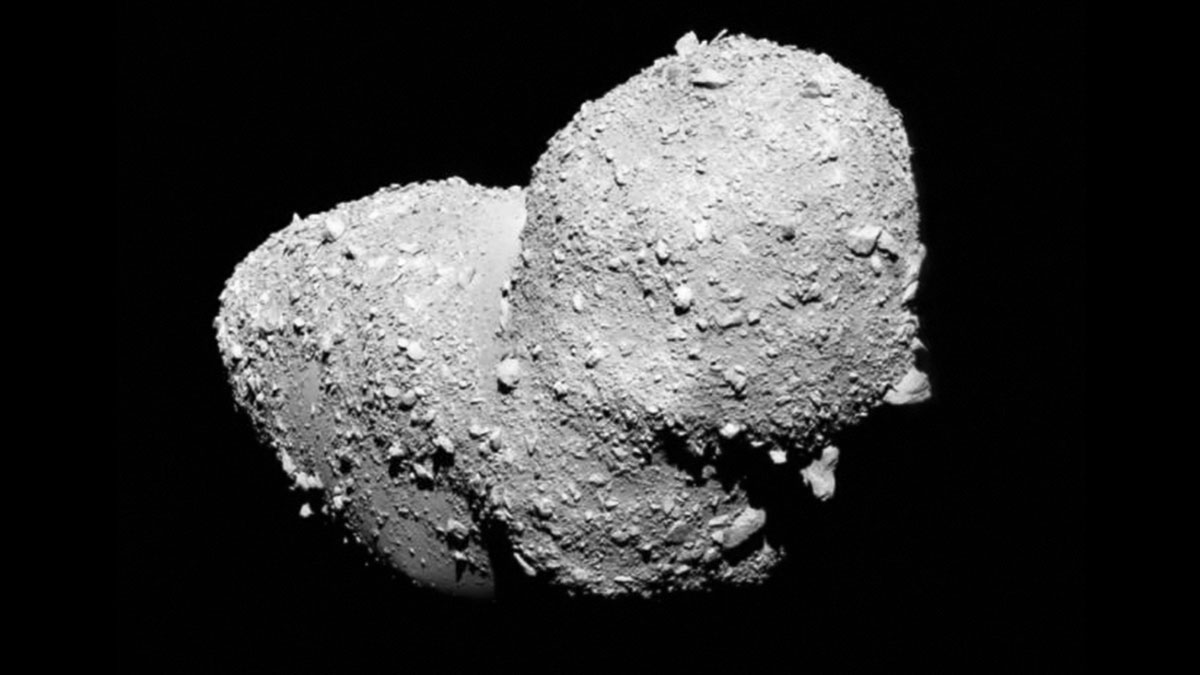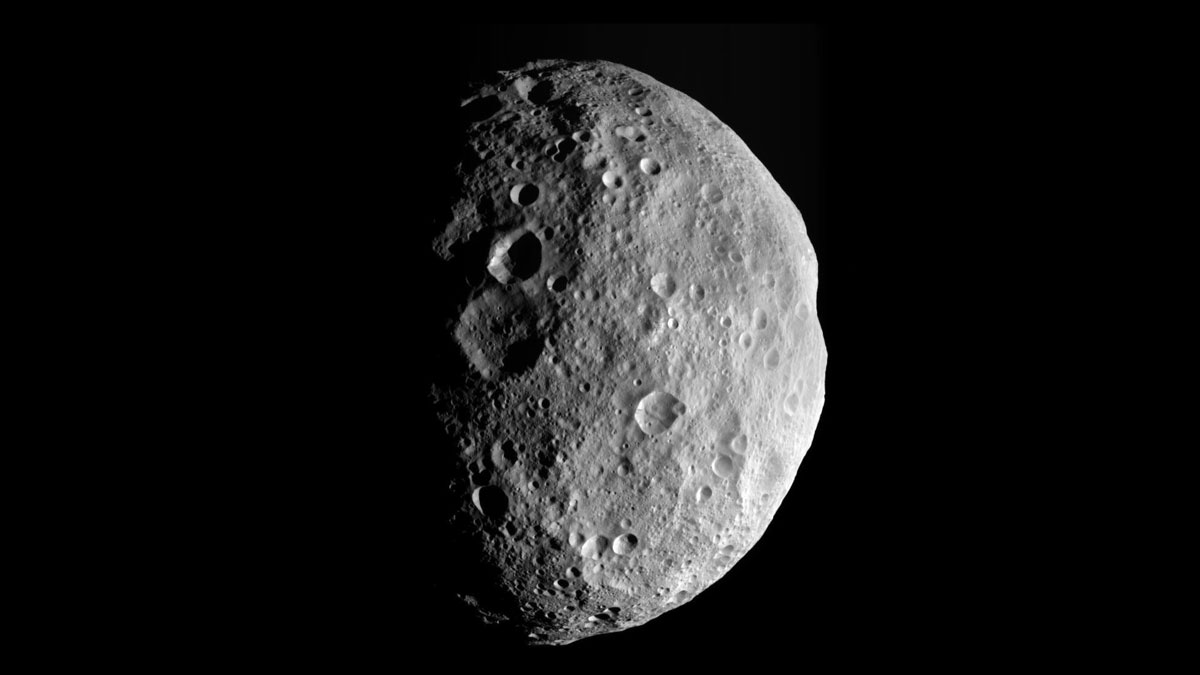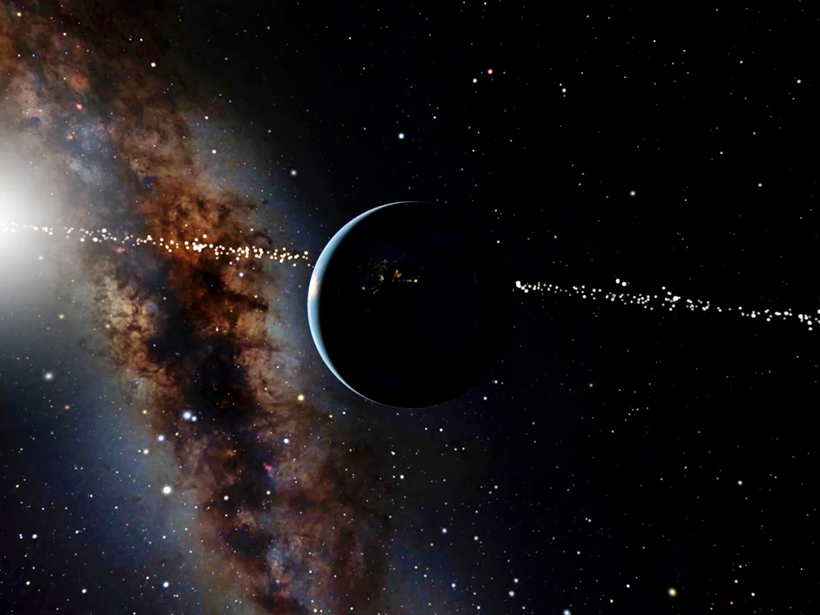Data from the Gaia space observatory reveal that many slowly spinning asteroids rotate chaotically. A new theory links that chaos to their inner structure and history.
Gaia
Posted inNews
The Late, Great Gaia Helps Reveal Asteroid Masses
Astronomers are using data from the recently decommissioned star-mapping satellite to help determine masses and more accurate orbits of celestial bodies closer to home.
Posted inNews
Galaxy Mapper Tracks Asteroids Closer to Home
The Gaia mission’s asteroid survey will help dig deeper into the solar system’s rocky history.
Posted inNews
Thousands of Stars View Earth as a Transiting Exoplanet
Researchers have identified more than 2,000 stars whose past, present, or future vantage points afford a view of Earth passing directly in front of the Sun, a geometry useful for pinpointing planets.
Posted inNews
1.3 Million Pairs of Stars Surround the Sun
Roughly half of Sun-like stars have a stellar sibling, and a surprising fraction of those siblings are identical twins.
Posted inNews
Wanted for Grand Theft Galaxy: The Milky Way
Several dwarf galaxies orbiting the Milky Way were likely stolen from the Large Magellanic Cloud.






